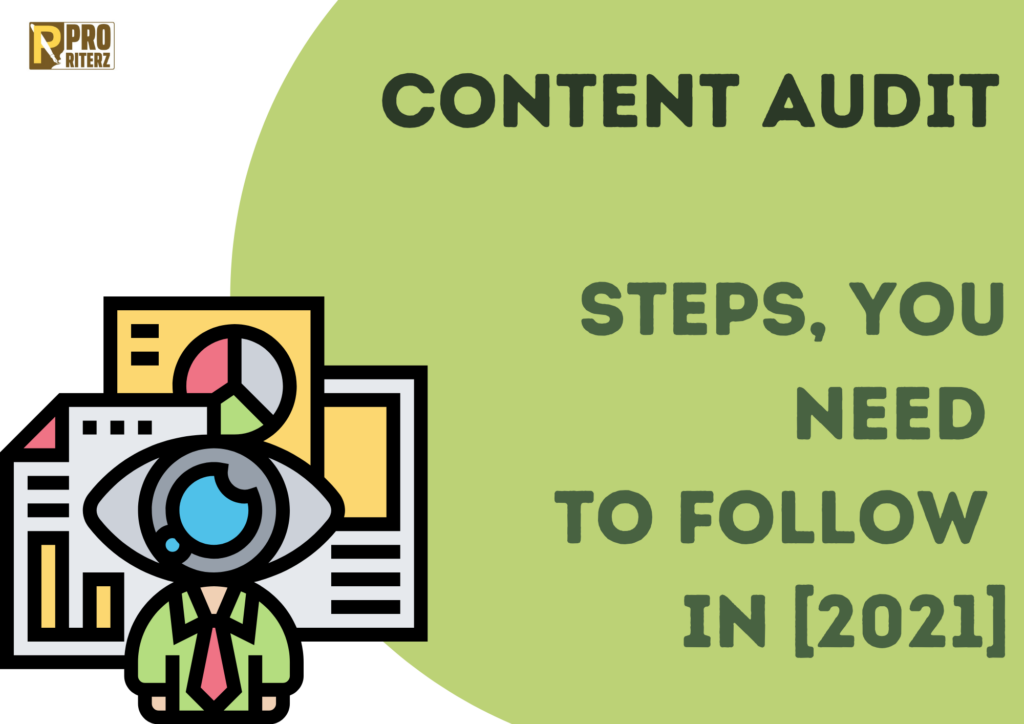
Website Content Audit: Steps that You Can’t Miss!

Heads up!
“What is it, I pray tell, that strikes the fear most among the bloggers and most experienced marketers of all?” asked the curious mind.
“The content audit,” came the response from an experienced soul.
We spend our time thinking about how to achieve our content goal. We keep creating content and distributing it according to a full-proof plan. But, for one moment, hold back and look at all that you have created till today. Are you keeping track of how those are performing? Or, have they been buried under the ruthless grave of time?
Most of the time, we lose track of such regular checks. And, as a result, these contents are rarely reused and revisited. Years later, these contents become stale and irrelevant.
But, a regular and well-executed content edit can help you identify the contents- needed to be improved or be repurposed into some other formats. Thus, you can make them as fresh and good as the day of their creation.
Today, you will know how you can perform a website content audit by yourself or use the website content audit tool for the job.
What is a Website Content Audit?
A content audit is a process where you systematically analyze and assess all your content on the website. Thus, you find out the relative strengths and weaknesses that have piled over throughout the time.
Evaluating the strengths and weaknesses will help you make future content strategies, develop your content workflow, and efficiently adapt to the current marketing goals.
But how do you know when your content needs auditing? Well, it should be a regular process, meaning that whether you see any sign or not, you should keep auditing it periodically. However, there are some signs that you might notice telling you when the audit is of utmost necessity.
In most cases, you will see a drop in web traffic forwarded to your website. In short, you will see a sharp decrease in your traffic. It happens mostly because of outdated keywords or the ranking of the same decline over time.
At this point, you need to seek help from a website content audit service, experienced and skilled in such tasks.
However, you can run an audit yourself as well. Here’s how:
How to Audit Your Content?
I would suggest going for an expert website content audit service if you want a professional audit. However, it is not always necessary if you can maintain these small habits that I’ve mentioned below.
Auditing website content is easy as long as you are regular. If you keep delaying this stuff, it will only pile up over time, leaving you with more volume to be looked into. Anyway, let’s see these website content audit tips below:
Identify the Decaying Content
Content decay is an unstoppable thing. It happens gradually over time. When it comes to blogging or content marketing, most of us are charmed with the idea of new content. Of course, Google has a taste for fresh content as well. But, you might be thrilled to know the possibilities of how you can repurpose content into other forms.

But to do that, you need to identify the decaying content. When it comes to Google searches, the search engine has three parameters to qualify content as ‘fresh.’ These are:
- Regular events
- Recent events or hot topics
- Frequent updates
Now, by running a content analysis, you can easily determine which of your content is seeing a decrease in traffic. Thus, by pointing out, you can plan your strategy accordingly and update those as well. Therefore, it will be easier to plan which of the parameters would suit it best.
Consider Keyword Rankings
I don’t have to teach the importance of keyword ranking to a person such as yourself. But, you should know the ranking is one of the primary indications of content auditing. If you see a dip in keywords ranking, you would also find it affecting the overall scenario. When keyword ranks drop, you lose your audience.

One way to fix it is to check your competitor’s ranking. As you see where your competitors are standing, you can check which keywords they are using or whether they are using any synonyms or some other terms perhaps. And, once you find that, you should think about targeting the same on your meta-data and on-page copy.
Once you know what keyword changes are necessary, you can update your content accordingly.
On-Page Copy
While auditing your content, your goal is to repurpose it for better opportunities. As I have recently talked about the importance of keywords ranking, I can’t possibly remove the opportunity that might come with including newer keywords- the ones relevant now. So, you have to focus on the on-page copy.

While doing so, you must not get into keyword stuffing. It should fit into a sentence naturally without making it sound awkward. Think logically while putting new keywords into the existing content. More importantly, think as a reader. If you force keywords into the copy, it will create a terrible UX, which in terms will hurt the page performance.
You can also update content by including relevant sub-topics that would directly savor the answers your audiences need.
Follow Page Format
Competitor research should not be limited to what keywords they are using or what pain points they are pointing out. Remember, Google is not a child anymore. It goes beyond the typical boundary of keywords into the mindful aspect of readers. So, the formatting of your content plays a crucial role.
You should follow the formats of your competitors or try to create a better one. And for that, follow the ones on the top of the SERP. You should also see the People Also Ask section for better understanding. Formatting is crucial and increases the readability of your content. Hence, you should keep it updated.
You can follow this content audit checklist to decide the layout of your page:
- The number of H2 and H3 headings in use
- Whether there’s a table
- Bullet points
- Whether there is an ascending or descending order list
- Whether FAQs are there
Add Image Alt Tags
Alt text helps your image to load quickly. It might not seem to be a game-changer always. But, if you value images on your page, alt texts are a must. Alt text plays an important role in SEO. It makes sense of your images when those can’t get rendered. Thus, it helps the search engine to

It is exactly why all your images should have well-written alt text. You should put your keywords into alt texts. It helps in improving the SEO of your page. Let’s see one such website audit example incorporating alt text. If you include a picture of a phone (say, iPhone 12 mini) on your blog, you can write the alt text in three different formats:
Good Alt Text: <img src=”iphone.png” alt=”driver”>
Better Alt Text: <img src=”iphone.png” alt=”iphone12”>
Best Alt Text: <img src=”iphone.ong” alt=”iphone 12 mini product RED 64 GB variant”>
As you can see, even if the image doesn’t render, one can still understand what it is about from the alt text here.
Add External and Internal Links
You have learned a lot of things already about how to audit your content using keywords. And now you should be looking for linking opportunities. Anyone into content marketing or blogging knows the importance of best linking practices.
External and internal links can serve your many purposes. For example, suppose you update an article called “Best Instagram Reels Tips.” Now, when you wrote this article 3 years back, you used some stats as well. But, those numbers have changed a lot. So, you can now re-link the new numbers to authoritative websites to increase the trust factor.

Similarly, you can add new external links to increase your sphere of research for your audiences.
Again, internal linking is a great way to forward your audiences to other relevant content. If you find an opportunity of interlinking any page to drive the traffic down to the bottom line, you must grasp that well.
Collect and Analyze Data
Data collection is a very complex procedure. It involved collecting data of your guest posts or on any other third-party website as well. You have to create a spreadsheet for that to keep track of everything, including metadata, H1 titles, etc. So, you can use some website content audit tools, such as SEMrush.
Adjust Your Content Marketing Plan
As you collect data, you can later analyze it to set your content marketing strategy. This data collection should help you gain an idea of guest visits, clicks, performance, relevance, updated keywords, and keywords performance in your metadata and H1 titles. So, you will have an idea of how everything is performing.
Now, you have already done your competitor research and seen the format your competitors are using. Also, you have gone through the SERP for the top results on a certain keyword(s). Thus, you can now set your content marketing strategy based on the data you have gathered.
Use Website Content Audit Tools

Website content audit is a hectic job. If you plan to do it yourself, you have to dedicate an immense amount of time to it. But, there’s always an easier way. Professional content audit tools make this whole process a lot easier. Or, you might also go for several website content audit services.
Some of the most prominent website content audit tools are:
You can avail of their professional services and get done with this unholy monster sooner.
Conclusion
Content auditing is like eating those bitter medicines which we don’t like but are still necessary for good health. While writing new blogs or creating new content might seem 100% legit and appealing, going back to the ones we created is far more important. Repurposing content is a crucial thing. It not only stables your content directory but keeps your website up to date.
Like many others, if you find it hectic, I would recommend always going for website content audit services or tools. Whatever you do, running a website audit once or twice a year is very important. With that, I hope this discussion was completely worthy of your time and hope to see you soon.